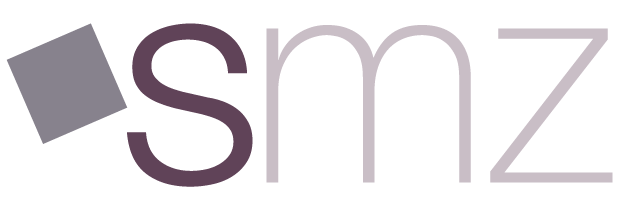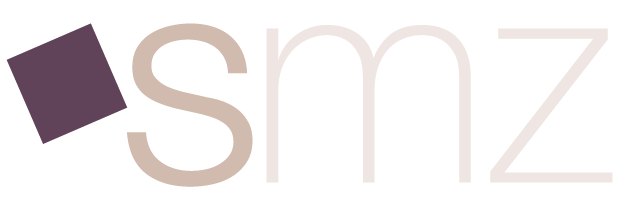Key Highlights
• Developed educational ecosystems tailored for adult learners, adapting to the evolving demands of digital and societal shifts.
• Specialized in delivering programs in hybrid or blended learning formats to meet diverse needs.
• Designed for a variety of training environments, from higher education to corporate sectors.
Educational Ecosystems
Since 2006, I have developed adult educational programs, witnessing the transformation in educational demands driven by digital advancements and societal shifts. With three generations in today’s workforce — Gen Z, Millennials, and Gen X — traditional continuing education programs alone no longer suffice.
The ecosystems I design address this need by establishing a foundational theoretical understanding, skills development, and real world application. The ecosystem around that captures and embraces the variances of the adult student population. That learning experience is best delivered in a hybrid or blended learning form to meet varied needs. Types of modality and source material are also varied for different learning styles. The ecosystem then expands out from that to broader educational aspirations. Ultimately, the individual determines the ecosystem’s benefits.
Examples of ecosystems I have developed:
ECE Digital Marketing Ecosystem - 2012-2025
I reset the Emory Digital Marketing program in 2022, after co-introducing it in 2012 and lead-teaching for ten years. I renamed the program to reflect the workflow of how to plan and develop multichannel campaigns, then run the campaign for an actual client. Inbound marketing and multichannel strategies, essential for modern marketing philosophy, alongside the latest technological adaptations in digital, were vital ingredients. The new program became the core for a broader Digital Marketing Ecosystem that offered advanced focused areas of emerging roles in the industry.
I reset the Emory Digital Marketing program in 2022, after co-introducing it in 2012 and lead-teaching for ten years. I renamed the program to reflect the workflow of how to plan and develop multichannel campaigns, then run the campaign for an actual client. Inbound marketing and multichannel strategies, essential for modern marketing philosophy, alongside the latest technological adaptations in digital, were vital ingredients. The new program became the core for a broader Digital Marketing Ecosystem that offered advanced focused areas of emerging roles in the industry.
The core program required a modular course structure that could accommodate both traditional and digital marketing students and beginners. The curriculum followed a workflow process vital for on-the-ground vocational learning. It needed a variety of bonus content to satisfy this diversity, accommodating different learning patterns with a balance of structure and self-pacing. During the capstone practicum, students develop a marketing brief and marketing plan for a real-world client. They then coordinate with their client to run the campaign after receiving their certificate. I added a bonus mini-course for how to create a case-studies based marketing portfolio.
I integrated lessons from the MindEdge test prep bundle for the OMCA™ (Online Marketing Certified Associate) certification into my curriculum. This diversified the curriculum and complemented the Emory academic content with industry-standard material. Our graduates can sit for the OMCA™ exam within six months of earning the Emory certificate, marking this as the first program to combine an academic certificate with this valuable industry credential.
In early 2025, I began work to integrate two new modules into the program in time for for the summer or fall 2025 term. This new course of study is entitled Using AI in Digital Marketing. The two lectures are “How is AI Used in Marketing, Including Ethics and Privacy Issues?” and “Automation and AI in Digital Marketing.” The subjects to be covered in the new modules include core AI concepts like machine learning, natural language processing, and computer vision; common skills used in AI-driven digital marketing; ethical and data privacy considerations; automation in digital marketing; and demos of examples of the most cutting-edge and popular AI apps presently being used in the industry.
In early 2025, I began work to integrate two new modules into the program in time for for the summer or fall 2025 term. This new course of study is entitled Using AI in Digital Marketing. The two lectures are “How is AI Used in Marketing, Including Ethics and Privacy Issues?” and “Automation and AI in Digital Marketing.” The subjects to be covered in the new modules include core AI concepts like machine learning, natural language processing, and computer vision; common skills used in AI-driven digital marketing; ethical and data privacy considerations; automation in digital marketing; and demos of examples of the most cutting-edge and popular AI apps presently being used in the industry.
ECE Graphic Design Certificates 2006-2024
When Emory approached me in 2004 to teach Adobe software courses, it was not long that I recognized broader needs from our students. Within two years I developed Emory’s first Graphic Design program. Over the years, I’ve grown that into an adaptable ecosystem today.
When Emory approached me in 2004 to teach Adobe software courses, it was not long that I recognized broader needs from our students. Within two years I developed Emory’s first Graphic Design program. Over the years, I’ve grown that into an adaptable ecosystem today.
With dramatic departmental changes during COVID, the Graphic Design program required redevelopment for online delivery. I was then asked to teach two sections. I noticed structural and contextual concerns. I enhanced the program by integrating a workflow component and real-world client projects. As final assignments, students now complete a new brand creation, brand content, graphic identity style guide, and portfolio case study, preparing them for competitive career entry. The end results were a significant improvement. Students found work in a competitive field and some started their own design agencies.
ECE Web Certificates- 2007-2018
Collaborative Development
In 2007, following the success of the Graphic Design program, our faculty web team was tasked with creating a robust Web Certificates Program. This brought together diverse expertise. I led the design and front-end courses while also developing the program’s popular web programming course. Paul Dunlop designed back-end courses focused on Microsoft Web Development, while Brent Laminack and Doc Roberts contributed their skills in open-source programming. Together, our strengths balanced each other. This created comprehensive front- and back-end or full-stack development student options.
Collaborative Development
In 2007, following the success of the Graphic Design program, our faculty web team was tasked with creating a robust Web Certificates Program. This brought together diverse expertise. I led the design and front-end courses while also developing the program’s popular web programming course. Paul Dunlop designed back-end courses focused on Microsoft Web Development, while Brent Laminack and Doc Roberts contributed their skills in open-source programming. Together, our strengths balanced each other. This created comprehensive front- and back-end or full-stack development student options.
For years, the web programs broke enrollment records, enabling us to deliver an advanced program that built off the four tracks we developed in 2007. After we developed those foundational tracks, we introduced advanced levels and specialized workshops in 2013, including Emory Corporate Training for entities like Army Public Affairs. This fit perfectly into the evolving idea of a Web Certificate Ecosystem.
Colleague Testimonial: “I have had the pleasure of working with Mary at Emory since 2006. Mary is an excellent instructor and mentor whose primary focus is always her students. Mary has been the driving force behind Emory’s highly successful Web Design and Development certificates. Many of Mary’s students come through my classes and they all have wonderful things to say about her classes and dedication to her industry.” — Paul Dunlop, Developer and Technical Trainer, who served with me on our web team
Newspaper Academy at University of Tennessee, Knoxville - 2010
Expansion Role
Because of both my education at The Poynter Institute but also my role at Emory, the Newspaper Academy reached out to me to develop and teach a Digital and Print Ecosystem Expansion program for community newspaper editors to help them adapt to digital publishing. The existing program was a more traditional one for vocational studies for community newspaper management and staff.
Expansion Role
Because of both my education at The Poynter Institute but also my role at Emory, the Newspaper Academy reached out to me to develop and teach a Digital and Print Ecosystem Expansion program for community newspaper editors to help them adapt to digital publishing. The existing program was a more traditional one for vocational studies for community newspaper management and staff.
I recommended changes that would make publishing and distributing their newspapers more efficient and effective. This included a shift over to Adobe InDesign, which allowed for print and digital publishing including ePubs. They needed to learn basic web coding and the related authoring tool, Adobe Dreamweaver, to more easily design web pages and content. The program included a social media plan for journalism. The outcome was strong. These adjustments facilitated the academy’s digital transition, helping community newspapers adapt to the challenges of a shifting industry landscape.
Student Testimonial: “Mary is an enthusiastic, detail-oriented instructor who makes learning about web design and development a much more inviting experience. As a longtime print journalist eager to make a full leap to the web, Mary has made the transition far easier than I could have hoped. She’s very encouraging and energizes her students to follow through on their experimental instincts ... Mary constantly reminds us to keep our heads pointed toward the digital tech horizon.” — David Brandt, Digital Marketing and Communications Strategist
Eckerd College, Professor Howard Carter’s Journalism course
Co-teaching and course design: Introducing Visual Communications to a Traditional Course
I was a sophomore in college when I signed-up for a journalism course. I met with Professor Carter before the class started and told him that I was still an active student with the well-respected Poynter Institute. My focus was photojournalism and page design, but also journalism ethics. He proposed I create a complimentary section to his traditional Journalism course to focus on theories of page layout design and journalism ethics. I had never taught before, and Eckerd College never before permitted an undergrad to co-teach. After approval, we wove our lessons together, ultimately changing his course to open it to both the verbal and visual dimensions of print journalism and the deeper component of ethics. This approach remained a staple in the program for years.
Co-teaching and course design: Introducing Visual Communications to a Traditional Course
I was a sophomore in college when I signed-up for a journalism course. I met with Professor Carter before the class started and told him that I was still an active student with the well-respected Poynter Institute. My focus was photojournalism and page design, but also journalism ethics. He proposed I create a complimentary section to his traditional Journalism course to focus on theories of page layout design and journalism ethics. I had never taught before, and Eckerd College never before permitted an undergrad to co-teach. After approval, we wove our lessons together, ultimately changing his course to open it to both the verbal and visual dimensions of print journalism and the deeper component of ethics. This approach remained a staple in the program for years.
________________________
The future of continuing education offers dynamic, personalized opportunities for learners and innovators alike. For me, the path ahead means creating transformative ecosystems that stay relevant and impactful, always with the students’ growth and success as the ultimate goal.






